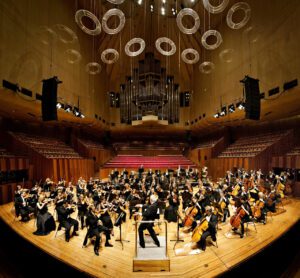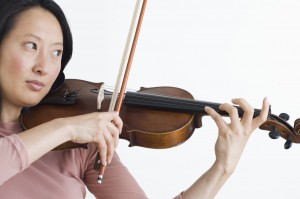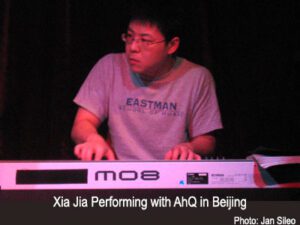The Marlowsphere (#22)
In keeping with the overall “music, media & culture” themes of The Marlowsphere Blog, the next few blogs will deal with music education in China, and, in particular, jazz in China. This material is drawn from my forthcoming book Jazz in the Land of the Dragon.
***********************************************************************************
 Musical America Worldwide reported recently on classical music and education in China. The headline reads: “Sydney Symphony in Deal with Guangzhou.”
Musical America Worldwide reported recently on classical music and education in China. The headline reads: “Sydney Symphony in Deal with Guangzhou.”
The August 4, 2012 article goes on to say:
Juilliard is setting up a satellite operation, its first ever, in Tianjin, with intentions of capturing the thirst for classical music education in China. The Philadelphia Orchestra has announced an annual residency at the National performing Arts Center in Beijing, in addition to its touring activity in Asia.
And now the Sydney Symphony is jumping into the classical music frenzy in China, having just signed a three-year greement to help train Chinese musicians in Guangzhou, in exchange for providing marketing expertise for the city’s new opera house. The orchestra’s goal, apparently, is to be the “premiere” orchestra in the Asia-Pacific. Guangzhou, meanwhile, is invested in raising its status as a city of culture.
Classical music education—western style—in China has been on the rise ever since the demise of Mao in 1976. When I visited Shanghai, China, in the summer of 2006 (my second visit there since 2000), there were several department-like stores with major floor sections devoted to classical musical instruments. The desire for classical music education is also strong and not just for an elite few. In one store I observed a parent (or perhaps it was a teacher) giving a lesson to a young girl on one of the many pianos on display.
 The so-called thirst for classical music education and “arts” in general has been on the increase in China at least since the turn of the 21st century. And it is a two-way street: Chinese musicians come to the United States to study and play, and western musicians make the trek to China looking for new audiences. With respect to the former instance, this past summer I visited the Aspen Music Festival and School. Even though the season had not quite begun, the neighborhood was full of Asian students, many speaking what sounded like Mandarin. I have visited the Aspen school almost every year since 1989. This is not a blip.
The so-called thirst for classical music education and “arts” in general has been on the increase in China at least since the turn of the 21st century. And it is a two-way street: Chinese musicians come to the United States to study and play, and western musicians make the trek to China looking for new audiences. With respect to the former instance, this past summer I visited the Aspen Music Festival and School. Even though the season had not quite begun, the neighborhood was full of Asian students, many speaking what sounded like Mandarin. I have visited the Aspen school almost every year since 1989. This is not a blip.
A series of articles in The New York Times from several years ago attest to the growing interest in western music. For example,
- “As China Raises Its Arts Profile, Officials Try to Catch Up,” The New York Times, July 18, 2005.
- “Classical Music Looks Toward China With Hope,” The New York Times, April 3, 2007.
- “Increasingly in the West, the Players Are From the East,” The New York Times, April 4, 2007
- “[Chinese] Pilgrim With an Oboe, Citizen of the World,” The New York Times, April 8, 2007
- “For All the Rock in China: With the Western Market in a Downturn, More Performers Look East,” The New York Times November 25, 2007.
One of the above articles points out that the number of young people studying classical music in the leading conservatories in Beijing and Shanghai, China, numbered in low seven figures. In a way, though, this is a distortion. With a population of 1.3 billion+ and a strong push from the government for education in general, a million+ classical music student population should not be surprising.
The strong push for higher education in general in China was very much in evidence when I visited Shanghai for the first time in May 2000. Towards the end of the trip (I was a visiting professor at the University of Shanghai School of Film and Television) my Baruch College colleagues and I were invited to visit the new Shanghai University campus. After about a 30-minute drive from the old campus on the outskirts of Shanghai we arrived to view a sprawling campus of several new buildings and an open campus lined with trees. One floor of one building housed over a thousand computers for student use! We asked how long it took to build this highly modern campus. We were told it was accomplished in 18 months by a crew of 10,000 construction personnel working 24 hours a day!
China has spent several years building new higher education campuses all over the country as a way of growing its middle class. It has apparently learned that higher education is a path to economic prosperity.
Jazz Education in China
 But China is not only thirsty for classical music education. It has also reached out to the west for jazz education in several ways. They have established their own schools, particularly in Beijing and Shanghai. They have invited non-Chinese jazz musicians to perform in China. They have used technology, such as teleconferencing, to learn. And several musicians have traveled to the United States to learn directly from American jazz educators. One such person is Beijing-based pianist Xia Jia—pronounced Shia Jia—who studied with Harold Danko at the Eastman School of Music.
But China is not only thirsty for classical music education. It has also reached out to the west for jazz education in several ways. They have established their own schools, particularly in Beijing and Shanghai. They have invited non-Chinese jazz musicians to perform in China. They have used technology, such as teleconferencing, to learn. And several musicians have traveled to the United States to learn directly from American jazz educators. One such person is Beijing-based pianist Xia Jia—pronounced Shia Jia—who studied with Harold Danko at the Eastman School of Music.
My interview with him in next week’s blog.
Please write to me at meiienterprises@aol.com if you have any comments on this or any other of my blogs.
Eugene Marlow, Ph.D.
August 6, 2012
© Eugene Marlow 2012

